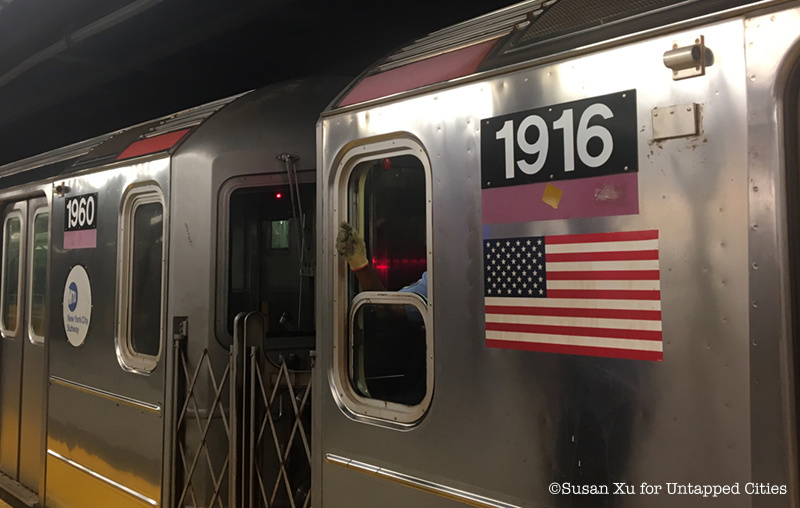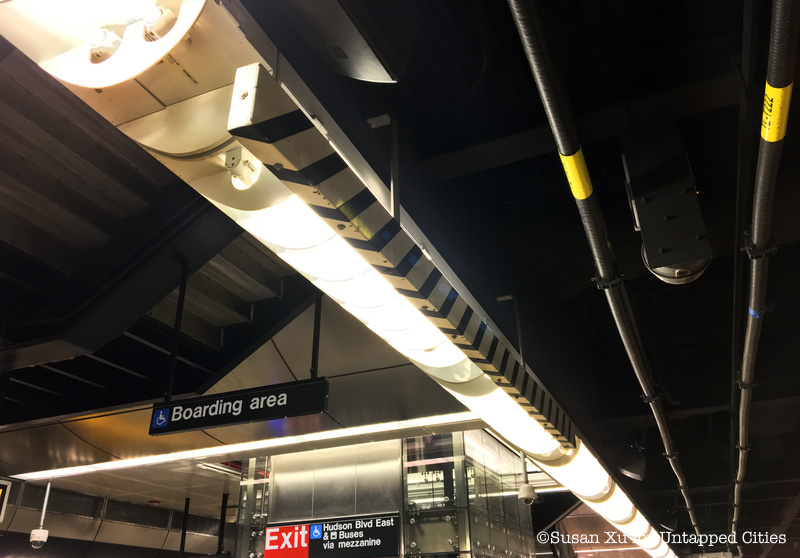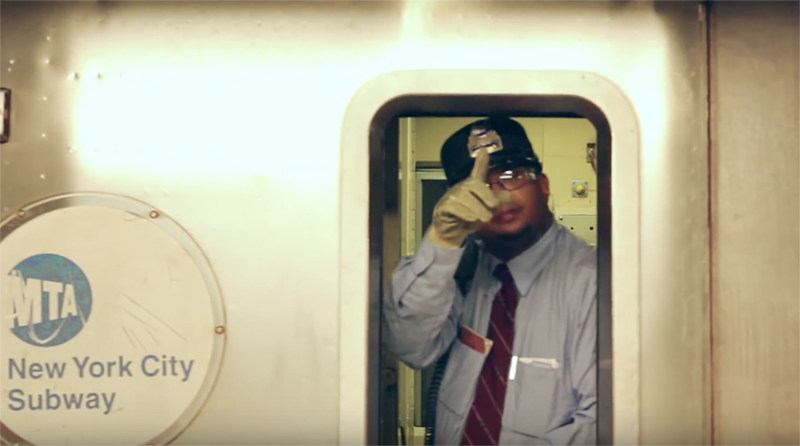
Given how much time New Yorkers spend on the subway, there’s still a lot we have yet to learn about the operators and conductors who literally drive the city (and the 5.6 million people that utilize the MTA on any given weekday). One thing that has piqued our interest for some time now is the wooden, black-and-white board that we sometimes see conductors pointing to as they pull into a station. If you, like the many other sleep-eyed commuters on the subway, have no idea what we’re referring to, here’s a lighthearted video that sheds light on it all:
The black and white stripped sign, installed in the middle of train platforms, has a name: it’s called a “zebra board” (for obvious reasons), and it indicates a prescribed spot on a platform where train conductors should stop at. When you’re responsible for moving millions of people on a daily basis, there is no margin for error. It could spell out disaster if a train pulls up too short or drives up too far into the tunnel. When properly aligned, the indication board is directly in front of the conductor’s window, letting him or her know that the entire train is on the platform and that it’s safe to open the doors.

According to the MTA website, the boards originated in Japan, and have been fixture on subway platforms since World War I, when the transit system shifted to “multiple unit door control” that allowed a single person to operate all the doors on a train. Before that, one conductor was stationed between every two train cars, and doors were operated individually. In September 1966, as another added level of precaution, conductors were required to physically acknowledge the boards by pointing to them.
“The practice of having our conductors acknowledge the boards is one component of safeguarding our customers,” said New York City Transit President Carmen Bianco. “It is a simple gesture that goes a long way toward reinforcing safe operating practices.”
 Image via “The New York Subway Signs Experiment” video: Yosef Lerner and Rose Sacktor
Image via “The New York Subway Signs Experiment” video: Yosef Lerner and Rose Sacktor
In Japan, the practice is honed to ensure safety: train conductors are accustomed to pointing at various phases throughout the transit operation, whether it’s to highlight speed indicators or upcoming wayside signals.
Next, learn about How NYC Earned Its Nickname “The Big Apple” and discover The Surprising History of the Iconic “I Love NY” Logo.





